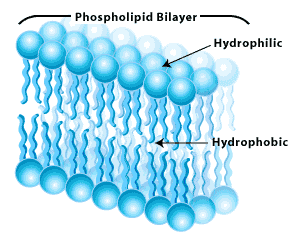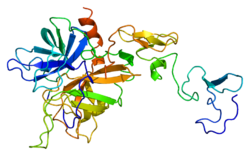Biology 311C
BIG IDEA I: STRUCTURE RELATES TO FUNCTION
3A: Biological Molecules
Carbohydrates
Polysacharrides as Macromolecules
Serve as fuel and building material: include both sugars and polymers of sugars.
Simplest are monosaccharides/monomers or simple sugars
Dissaccharides or double sugars joined by glycosidic linkage

Glucose is the most common monosaccharide and is of central importance in the chemistry of life
Carbohydrates are hydrophilic; the smaller carbo- hydrates, such as milk sugar and table sugar, are soluble in aqueous solution
Polymers such as starch or cellulose form colloidal dispersions or are insoluble.
Lipids
One class of large biological molecules that doesn't include polymers.
Not big enough to be considered macromolecules
Group together because they mix poorly if at all with water
Hydrophobic behavior is based on their molecular structure
Consist mostly of hydrocarbon regions
Most biologically important
Fats
Constructed from 2 kinds of smaller molecules
Glyceral - an alcohol; each of its 3 carbon bears a hydroxyl group
Fatty Acid - has a long carbon skeleton, usually 16 or 18 carbon atoms in length
The relatively nonpolar C-H bonds in hydrocarbon chains of fatty acids are the reason fats are hydrophillic

Phospholipids
are essential for cells because they make up cell membranes
The two ends of phospholipids are different towards water.
Hydrophobic hydrocarbon tails are excluded from water
The phosphate group and its attachments from a hydrophilic head
Steroids
Are characterized by a carbon skeleton consisting of four fused rings

Protein
Unbranched polymers constructed from the same set of 20 amino acids
Polymers of amino acids are called polypeptides
An amino acid is an organic molecule posessing both an amino group and a carboxyl group.
Biologically functional molecule that consists of one or more polypeptides, each folded and coiled into a specific three - dimensional structure
Nucleic Acids
Polymers made up of monomers called nucleotides
nucleotides are monomers that each polynucleotide consists of
Polynucleotides are macromolecules that exist as polymers

Deoxyribose makes it hyphilic since they are polar and can interact with water
2B: Chemistry for Biology

A hydrogen bond is formed when the positive end of one molecule is attracted to the negative end of another.
The formation of hydrogen bonds is important in biological systems because the bonds stabilize and determine the structure and shape of large macromolecules such as nucleic acids and proteins.

Molecules that have non-polar covalent bonds do not form hydrogen bonds, but any compound that has polar covalent bonds can form a hydrogen bond.
This is because non-polar bonds cannot interact whereas polar bonds can due to differences in charges
BIG IDEA III: GENETIC INFORMATION IS TRANSMITTED THROUGH GENERATIONS AND EXPRESSED IN A REGULATED MANNER.

11D: DNA Structure and Replication
Enzymes in Repiication
Helicase separates the two strands of DNA.
DNA Polymerase makes polymer of DNA and initiates DNA synthesis by adding nucleotides to a prexisting chain
DNA Polymerase forms a polymer of DNA in the 5'-3' direction
Topoisomerase relieves helix strain
SSBs bond keep DNA strands from re-pairing
Primase synthesises primer
Ligase joins the sugar phosphate back bones of Okazaki fragments into a continuous DNA strand
Prokaryotes
Have circular DNA
One origin of replication
Replication occurs in cytoplasm
Eukarytoes
Linear DNA
Multiple Origins of replication
occurs in nucleus

12B: Transcription and Translation
Enzymes for Transcription
RNA Polymerase pries two strands of DNA apart and joins together RNA nucleotides complementary to the DNA template strand, elongating the RNA polynucleotide.
Proteins for Transcription
Transcription Factors mediate the binding of RNA polymerase and the initiation of transcription
DNA Sequences for Transcription
Promoter sequence tells RNA Pol where to attach and initiate transcription
Terminator sequence signals the end of transcription
TATA Box recognized by transcription factors
BIG IDEA II: ENERGY IS STORED, USED AND TRANSFORMED IN LIVING SYSTEMS
8D: Metabolism
Enzymes speed up metabolic reactions by lowering energy barriers
An enzyme catalyzes a reaction by lowering the activation energy barrier, enabling the reactant molecules to absorb enough energy to reach the transition state even at moderate temperatures.
An enzyme cannot change the free energy for a reaction; it cannot make an endergonic reaction exergonic.
Enzymes can only hasten reactions that would eventually occur anyway.
Because enzymes are very specific for the reactions they catalyze, they determine which chemical processes will be going on in the cell at any particular time.
An enzyme is a macromolecule that acts as a catalyst, a chemical agent that speeds up a reaction without being consumed by the reaction.
Without regulation by enzymes, chemical traffic through the metabolism would become terribly congested because many chemical reactions take a long time.
Substrates bind to active site of an enzyme causing catalysis to occur.
Allosteric regulation is the term used to describe any case in which a protein's function at one site is affected by the binding of a regulatory molecule to a separate site.

May resulte in either inhibition or stimulation of an enzyme's activity.
The binding of an activator to a regulatory site stabilizes the shape of an allosteric enzyme that has functional actives sites.
The binding of of an inhibitor stabilizes the inactive form of the enzyme.
9A: Respiration

Organic Compounds + Oxygen => Carbon Dioxide + Water + Energy
Cellular respiration is the catabolic pathways of aerobic and anaerobic respiration, which break down organic molecules and use an electron transport chain for the production of ATP.
Aerobic respiration involves oxygen being consumed as a reactant along with organic fuel in respiration.
Anaerobic involves respiration without oxygen
Carbohydrates, fats, and protetins can all be processed and consumed as fuel, although Glucose is the fuel that cells most often use.

Glucose becomes oxidized and Oxygen becomes reduced

Controlled release of energy for synthesis of ATP via the Electron Transport Chain
